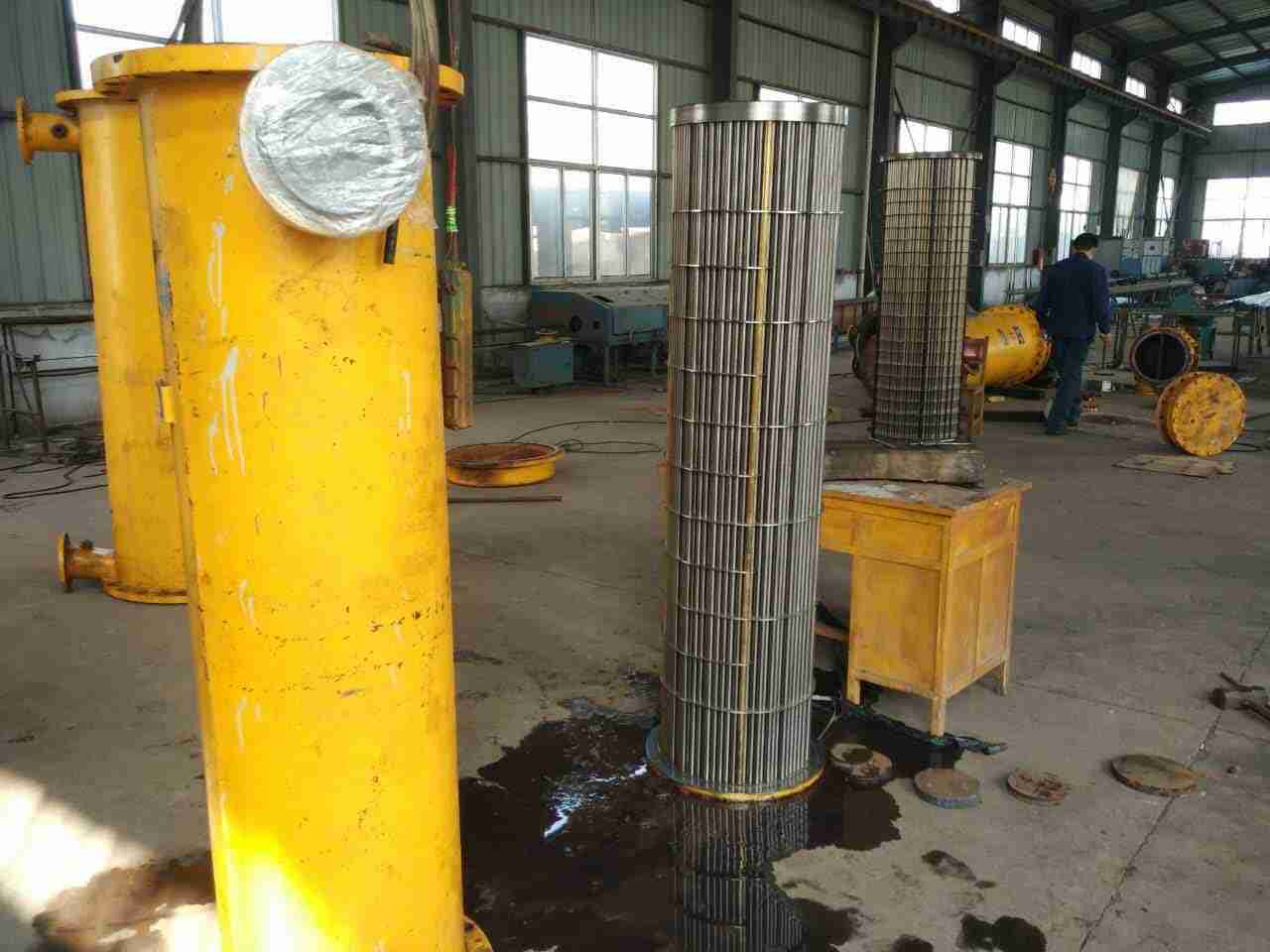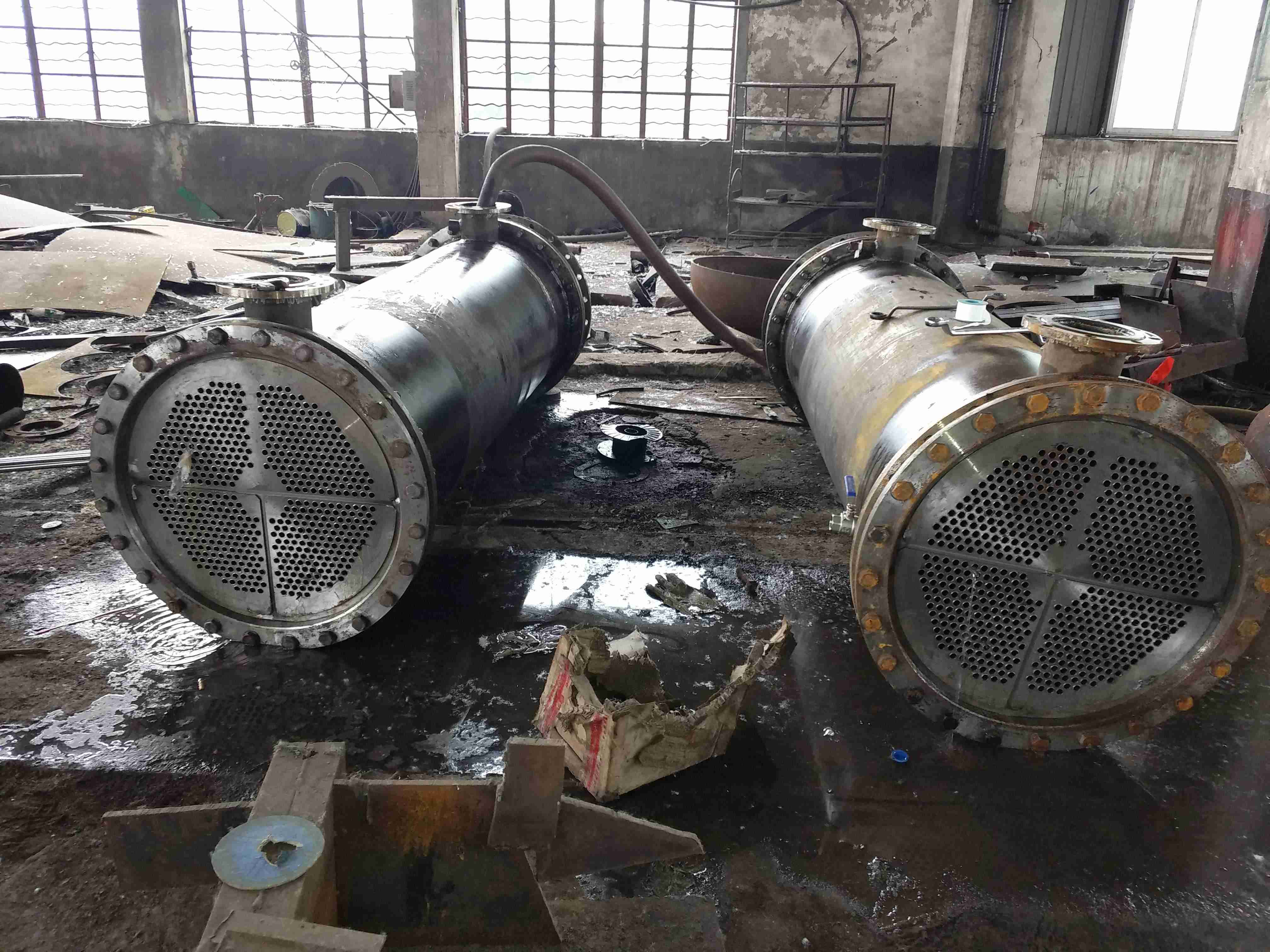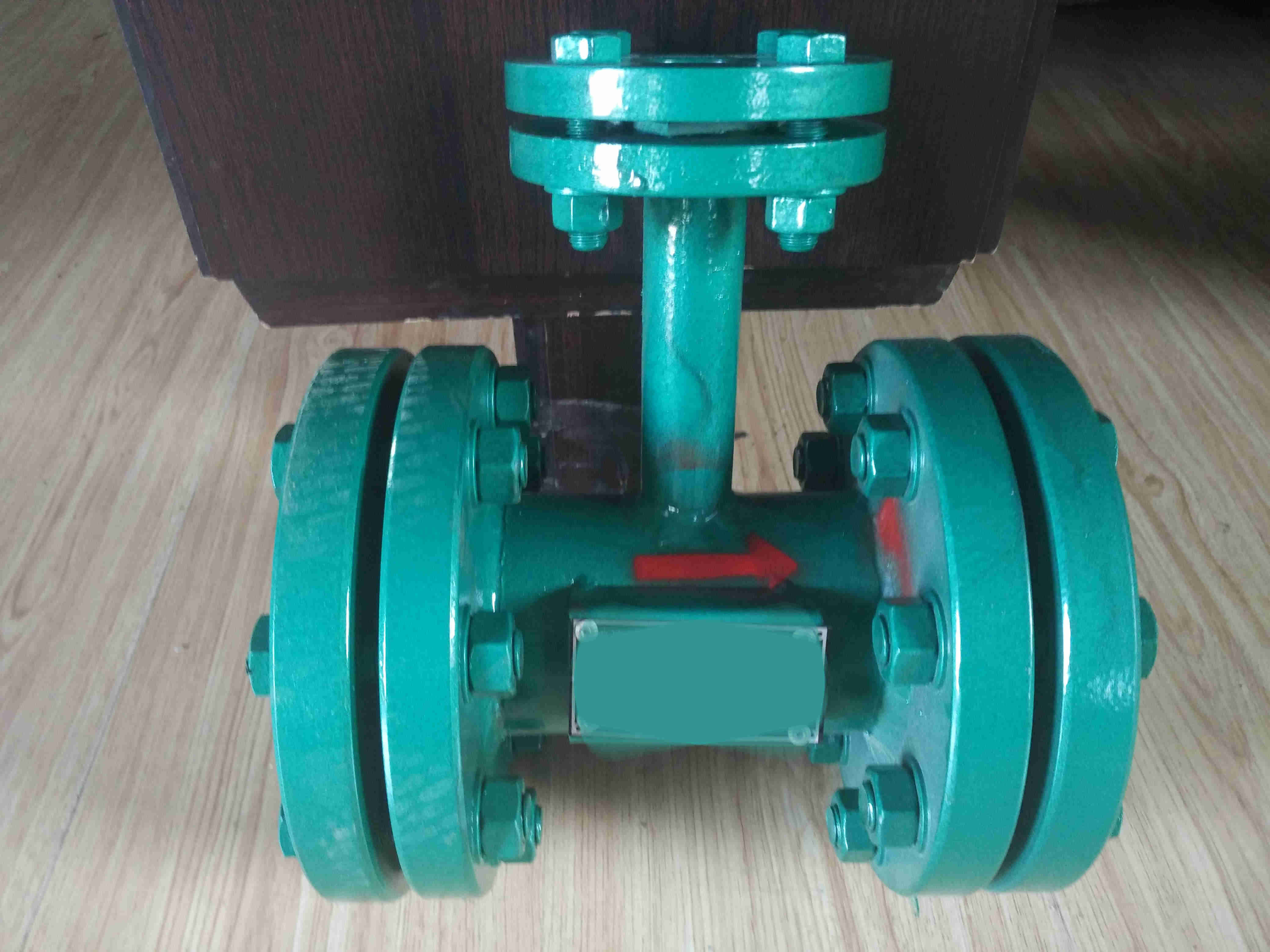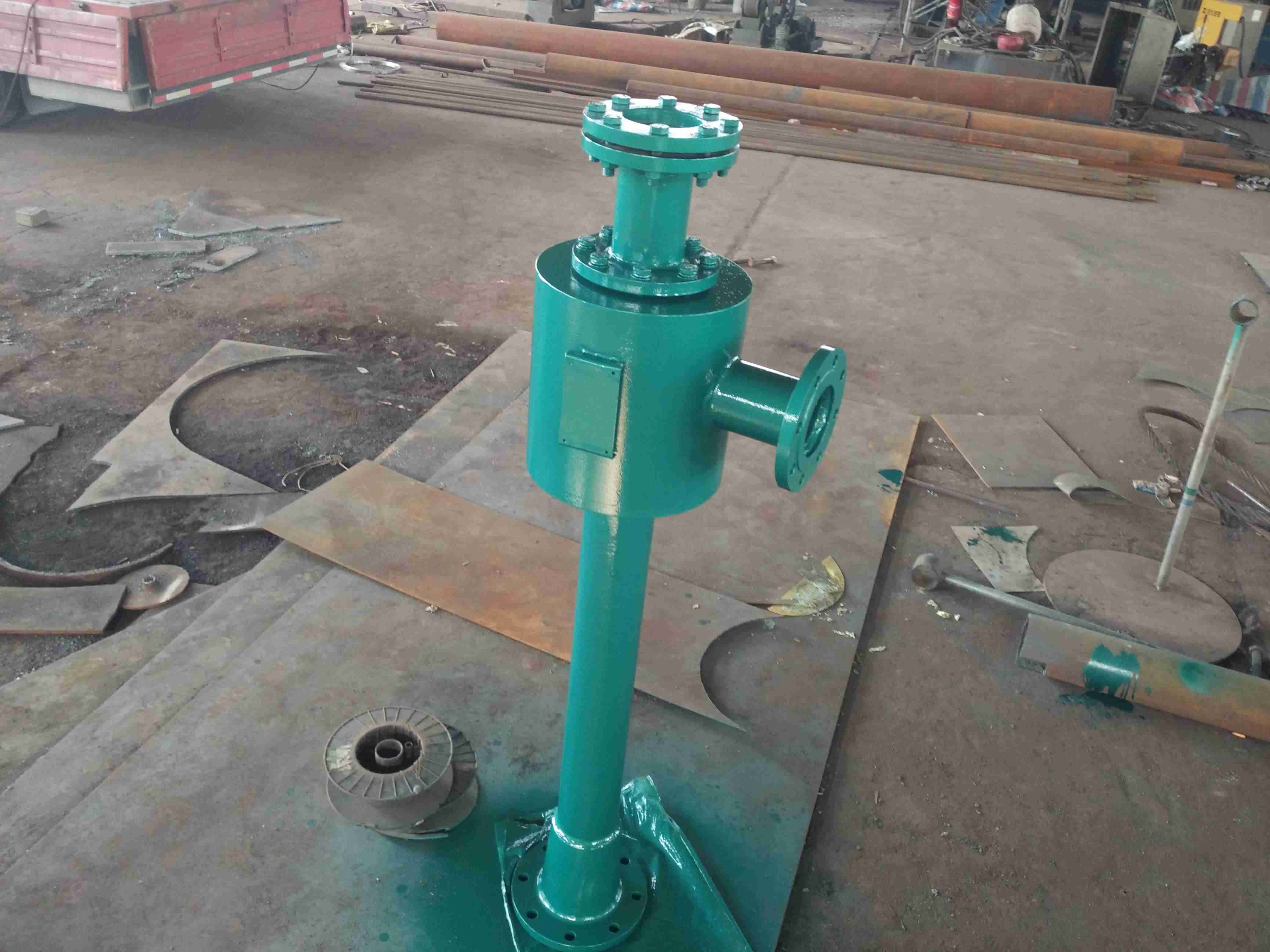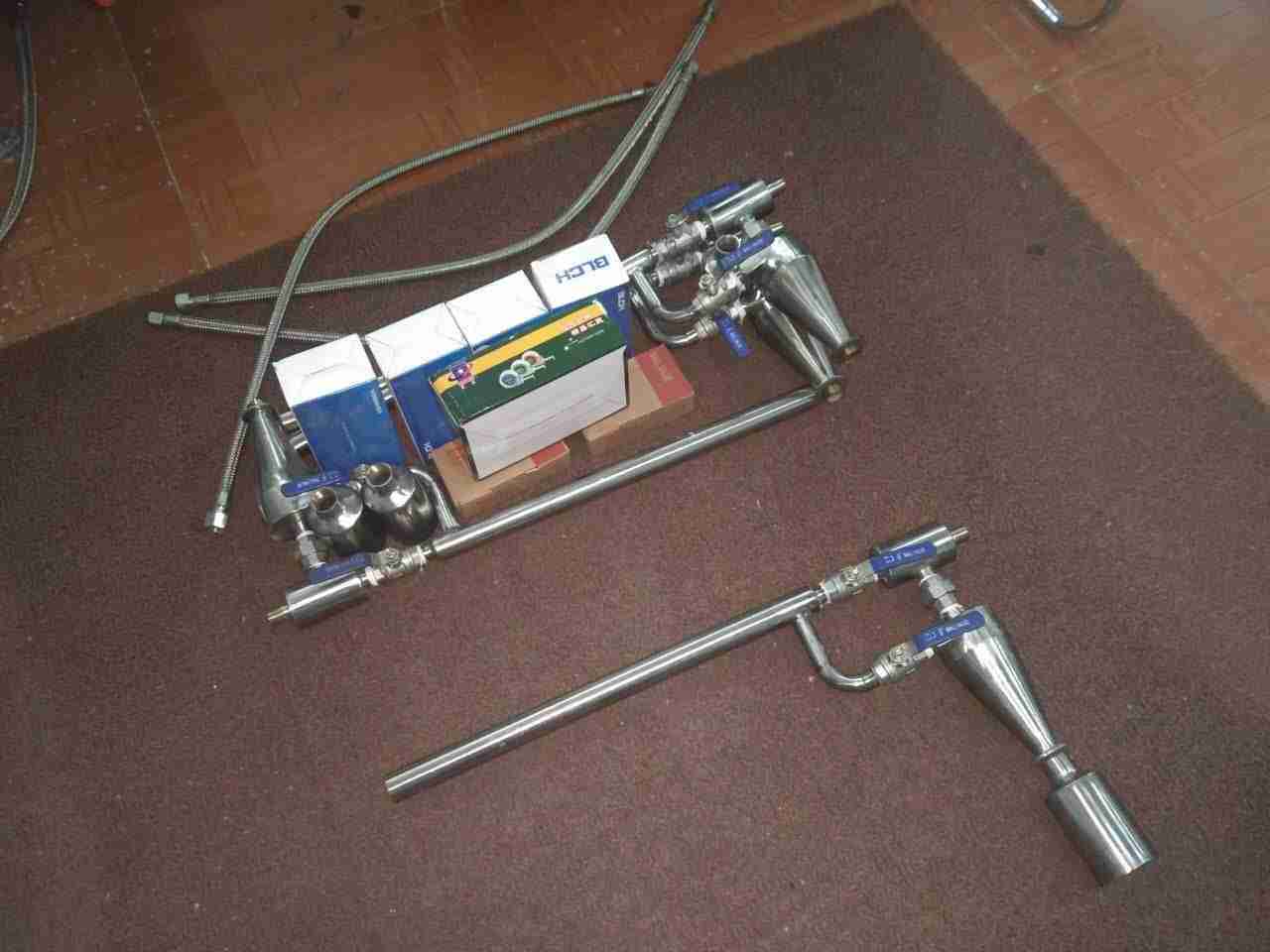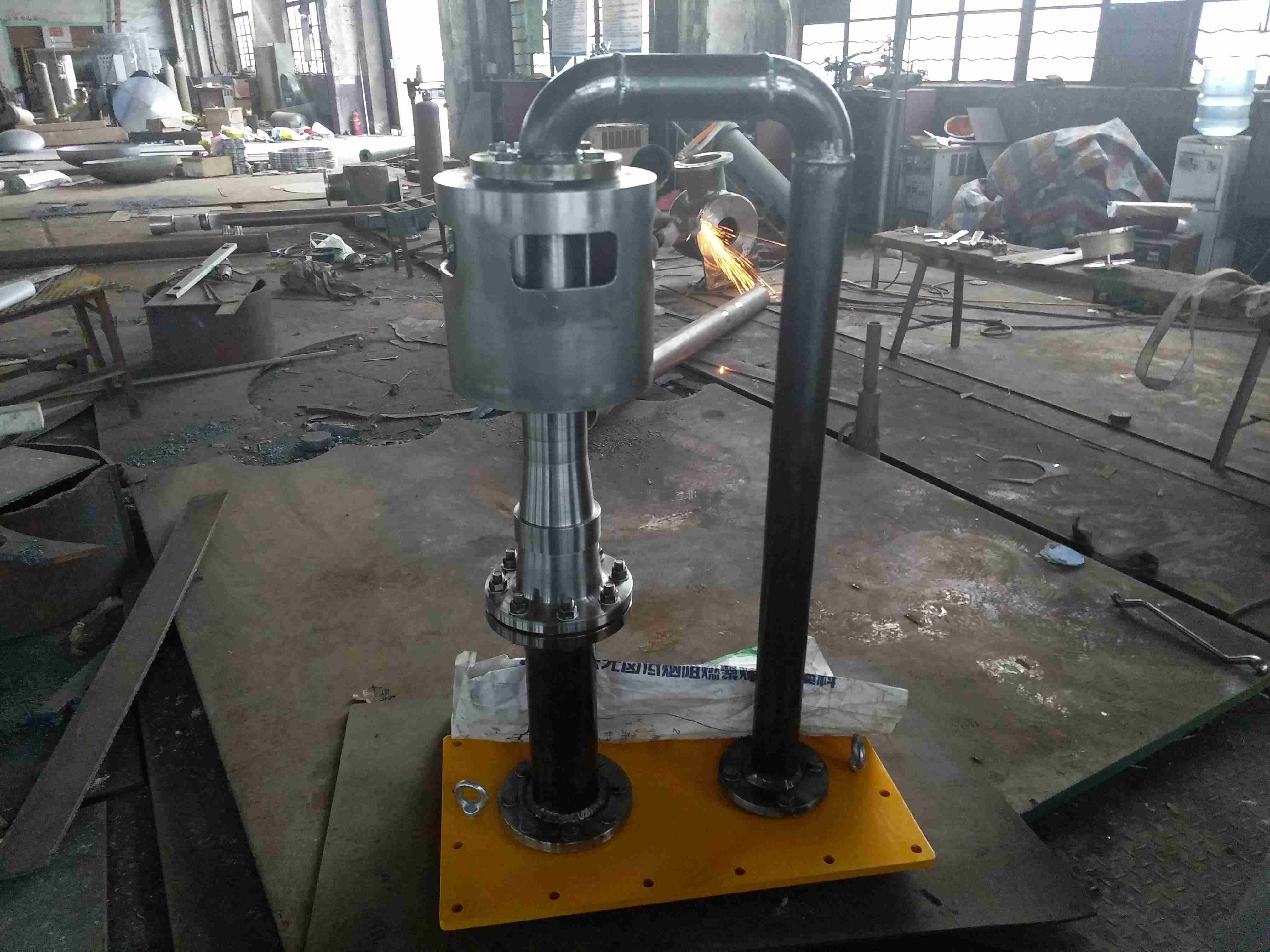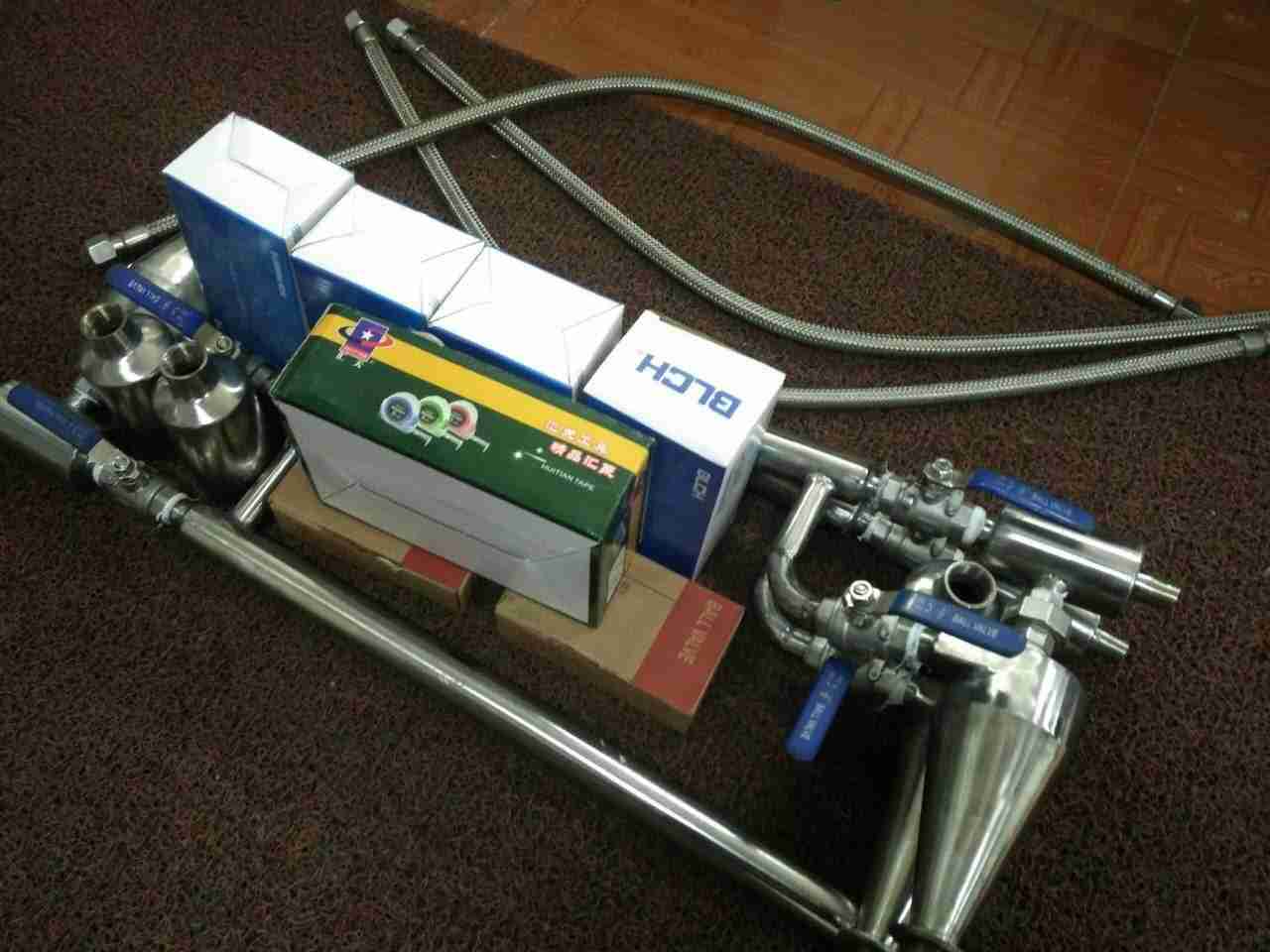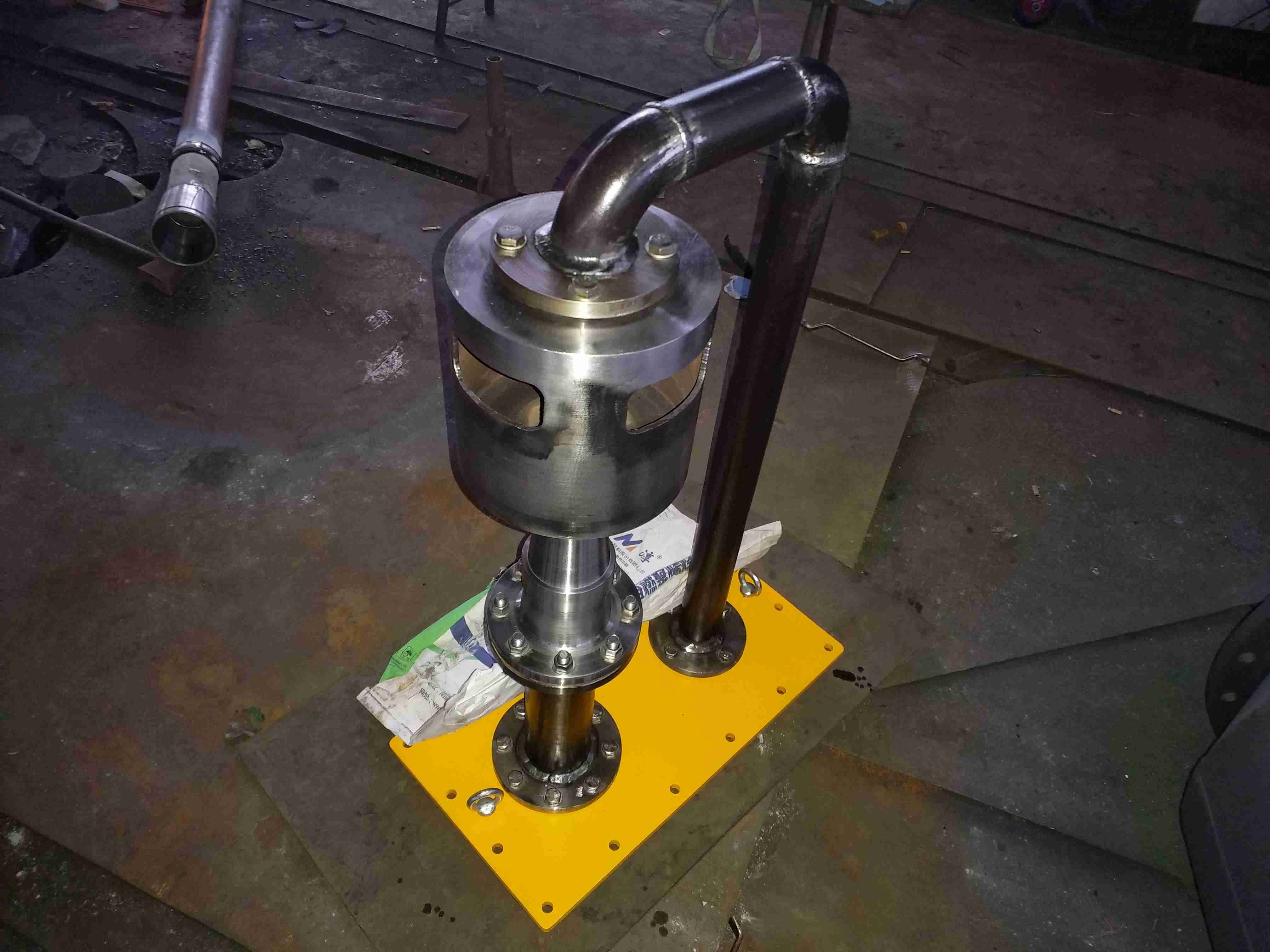A volumetric heat exchanger is a heat exchanger that utilizes the alternating flow of cold and hot fluids through the surface of the heat storage body (packing) in the heat storage chamber, thereby conducting heat exchange. The cold and hot fluids in the partition wall volumetric heat exchanger are separated by the solid partition wall, and heat exchange is carried out through the partition wall. Therefore, it is also known as a surface heat exchanger.
Detailed information of volumetric heat exchanger:
Application of volumetric heat exchanger: Suitable for hot water supply systems in general industrial and civil buildings-
Positive displacement heat exchanger: start-up, high heat transfer coefficient, less prone to scaling, high utilization rate of cold water area volume, energy-saving
Installation type of volumetric heat exchanger: horizontal volumetric heat exchanger, vertical volumetric heat exchanger
Positive displacement heat exchanger heat medium: steam, hot water
Winter has arrived, and many people like to take a hot bath in the bathroom, just take a quick shower and don't go out. The reason why people in cities have hot baths in winter is mainly due to the help of volumetric heat exchangers, which can provide different types of hot water such as high temperature, low temperature, and high temperature. Nowadays, volumetric heat exchangers are also more common among urban residents, and can be seen in factory dormitories. So, what is the selection method for volumetric heat exchangers- Let's take a look at the relevant introduction.
Positive displacement heat exchanger information:
With the development of our economic construction, the heat exchange equipment for domestic hot water is changing day by day, and many technologies have emerged. The horizontal volumetric heat exchanger is a typical equipment for domestic hot water and heating systems this year.
A volumetric heat exchanger can eliminate the need for a hot water tank, and the heat medium is exchanged between the coil tube bundle and the water inside the tank, causing the water temperature inside the tank to rise and meet the requirements for using hot water. It is an indirect heating method. There are many types of volumetric heat exchangers, which can be separated from horizontal heat exchangers in terms of appearance; From the perspective of heat medium quality, it can be divided into steam water type and water water type, that is, the heat medium can use steam or high-temperature water; From the inside of the tank, there are types such as volumetric and semi volumetric (semi i.e. hot floating coil type).
Horizontal volumetric heat exchangers, also known as pressure vessels, belong to pressure equipment. Enterprises need a pressure vessel production license to produce- It belongs to the scope of local boiler department supervision and mainly consists of cylinder, steam coil or bundle components, steam inlet and outlet, cold and hot water inlet and outlet, etc.
A volumetric heat exchanger mainly consists of a body, steam coil components, steam inlet and outlet, cold and hot water inlet and outlet, etc. In order to prevent surface corrosion inside the exchanger, a anti-corrosion alloy layer is sprayed on the surface, and a paint layer is brushed on the alloy layer. In addition, the original pipe box is removed, and the steam coil is directly connected to the outside through a flange, so that this type of heat exchanger has a simple and reasonable structure, long service life, heat exchange efficiency, and energy saving.
Volume heat exchangers can be divided into three types based on different heat transfer methods: combined volume heat exchangers, heat storage volume heat exchangers, and partition volume heat exchangers
Diagram 1 of volumetric heat exchanger group
Positive displacement heat exchanger - output potential:
1. The temperature drop of the heat medium in a volumetric heat exchanger is significant. During soda water heat exchange, the outlet temperature of the condensate is about 50 ℃, and a drain should be installed above and below the return pipe to facilitate maintenance. During water water heat exchange, the temperature drop is 2-2.5 times that of the same type of heat exchanger, and after heat exchange with high-temperature hot water at 120-150 ℃, it can drop to 70-75 ℃.
2. Positive displacement heat exchanger results in heat exchange and heat dissipation, with low heat loss and energy saving. At the same time, when steam is used as the heat medium, about 15% of the total heat exchange capacity can be recovered from the condensed water heat
3. The cold water area is small, and the volume utilization rate is high.
4. The volumetric heat exchanger maintains a large water storage capacity, low head loss, safe and stable water supply, and facilitates scale removal.
The application scope of horizontal volumetric heat exchangers:
Positive displacement heat exchangers are generally suitable for hot water supply systems in industrial and civil buildings, with steam or high-temperature softened hot water as the heat medium. They have advantages such as high heat exchange capacity, large temperature drop of hot coal, heat exchange efficiency, low heat dissipation loss, energy-saving, small cold water area, high volume utilization rate, low head loss, safe and stable water supply, convenient cleaning of scale, and convenient maintenance. This product is suitable for heating, air conditioning, and hot water supply systems in industrial and civil buildings such as hotels, restaurants, factories, schools, military units, and academies.
Horizontal volumetric heat exchanger production potential:
The horizontal volumetric heat exchanger has been proven by users to be at the same level as similar products. Taking heating as an example, it has the following potential:
1. The heat utilization of steam is high, and it can be fully utilized except for the heat dissipation loss of the equipment itself after insulation.
2. The single machine heating capacity is large, and can be used for heating an area of ≤ 200000 square meters. It can operate on a single machine without the need for backup equipment.
3. There is a high adaptability to the high and low steam pressure, and the supply steam pressure is between 0.01 and 0.8 MPa, which can operate normally, and there is vibration and noise.
4. The heating temperature can be self adjusted within the range of ≤ 95 ℃, and it is convenient and sensitive.
5. The system is easy to operate and can automatically reduce voltage without the need for additional voltage stabilizing devices, saving tens of thousands of investments.
6. Wearable parts, low maintenance costs, long service life, small footprint, can save a lot of construction costs, and are energy-saving compared to current equipment (tubular heat exchangers, plate heat exchangers, spiral plate heat exchangers, corrugated tube heat exchangers).
7. Low cost, such as compared to plate heat exchangers, the same heating area can save more than 50% of investment, with only the benefit of saving steam, and the investment can be recovered in the short term, which is the current replacement production of heat exchanger equipment.
Horizontal volumetric heat exchanger technology - features:
(1) The heat exchange is large, the temperature drop of the heating medium is large, and the temperature rise of the hot water is large.
(2) The tank body occupies a small area, and the space required for extracting the coil is small, which saves space.
(3) The cold water area is small and has a high volume to volume ratio.
(4) The volumetric heat exchanger maintains a large water storage capacity, low head loss, safe water supply, and convenient cleaning.
(5) Suitable for heat exchange of three types of heat media: high-temperature water, low-temperature water, and steam.
This series of heat exchangers solves the problems of large footprint, high condensate water outlet temperature, and low heat rate that existing volumetric heat exchangers have.
Horizontal displacement heat exchanger production ---:
(1) Start -: The heat transfer tube adopts a floating tube bundle structure, which automatically converts to turbulent heat exchange during heating, allowing the generated hot water to quickly reach the hot water outlet of the tank, doubling the heat transfer coefficient and greatly improving the heat release coefficient inside and outside the tube. Most of the cold water needs to be heated to supply hot water to the outside.
(2) Not easy to scale: Due to the use of copper or stainless steel in heat exchange tubes, and the strong scouring effect of turbulent fluid on the wall surface of the heat exchange tube, the principle of thermal expansion and contraction can be used to automatically remove scale, so it is not easy to scale.
(3) - Cold water zone, energy-saving and environmentally friendly, with high volume utilization rate
This product always heats the cold water at the bottom of the tank. When it comes to steam water heat exchangers or water water heat exchangers, the temperature of the heat discharge is low, and the heat energy is fully utilized. Especially when the temperature of the condensate water in the steam water heat exchanger is low, the condensate pipe may not be equipped with a drain. When the heating medium is stopped due to accidents or other reasons, the stored hot water can be supplied to the maximum extent.
Working principle of volumetric heat exchanger:
A volumetric heat exchanger consists of a body, steam coil components inside the body, and steam outlets, cold water outlets, and hot water outlets. Its characteristic is that the inner surface of the body (1) is sprayed with a layer of high-temperature melted anti-corrosion alloy layer. A volumetric heat exchanger is made by increasing the volume on the basis of a regular floating coil heat exchanger. Mainly used in hot water supply systems- Automatic temperature control devices should be installed at the general outlet to ensure the appropriate water supply temperature for bathing or sanitary hot water. In addition to fully possessing all the functions of ordinary floating coils, it can also store a certain amount of hot water to ensure timely supply of hot water.
Selection method for volumetric heat exchangers:
The selection is completed through calculation, and the heat exchange area is calculated to complete the selection. For simple production purposes, specifications and models can also be selected based on experience, and detailed calculations are required to complete the selection.
The selection of a volumetric heat exchanger should consider the hourly water consumption, and secondly, consider the buffer volume to prevent hot water from heating and cooling suddenly. Generally, the buffer volume is 1/4 of the hourly water consumption. Or it can be buffered for 10-15 minutes.
A volumetric heat exchanger consists of three main parts: a hot water storage tank, a built-in heater, and automatic temperature control
The main components of volumetric heat exchangers are:
Using a U-shaped tube with a heat transfer loop as the heating element and a side opening for easy maintenance, the water supply is designed according to the flow rate per second, which can maintain stable water supply even during peak water usage. Easy to achieve automatic temperature control, with minimal changes in water supply pressure, ensuring a balance between cold and hot water pressure in the system. The heating part has a high heat transfer coefficient, a large amount of heat exchange, sufficient heat exchange, and is easy to maintain. Heat exchange structure - mainly composed of U-shaped tubes, with a clear spacing of 11-25mm between the outer walls of the tubes, facilitating cleaning and maintenance.
Positive displacement heat exchanger technology - features:
(1) The heat exchange is large, the temperature drop of the heating medium is large, and the temperature rise of the hot water is large.
(2) The tank body occupies a small area, and the space required for extracting the coil is small, which saves space.
(3) The cold water area is small and has a high volume to volume ratio.
(4) The volumetric heat exchanger maintains a large water storage capacity, low head loss, safe water supply, and convenient cleaning.
(5) Suitable for heat exchange of three types of heat media: high-temperature water, low-temperature water, and steam. This series of heat exchangers solves the problems of large footprint, high condensate water outlet temperature, and low heat rate that existing volumetric heat exchangers have.
Design and usage instructions for volumetric heat exchangers:
In addition to the key heat exchange plates, there are two wall panels in the mechanical design of fixed tube plate heat exchangers, which are called frame panels and pressure plates. The frame panel is the non movable outer wall panel, and the pressure plate is the wall panel on the other side of the heat exchange plate that can be adjusted by tension rod bolts; Several tension rod bolts are used to tighten the frame plate and pressure plate; Column; The upper and lower guide rods are connected between the frame plate and the column, used to support and guide the pressure plate and heat exchange half; Bottom feet can be installed on frame plates and columns to secure the machine. In addition, there can also be a series of accessories such as flanges, filters, thermometers, and pressure gauges.
1. This series of heat exchangers can use steam or high and low temperature hot water as the heat medium, or alternatively use steam or high and low temperature hot water. Please specify the type of heat medium when designing and selecting.
2. This series of heat exchangers must be equipped with safety devices. The following three options can be chosen:
(1) The heat exchanger shall be equipped with a safety valve, and the selection, use, and installation of the safety valve shall comply with the provisions of the Pressure Vessel Safety Technical Supervision Regulations issued by the Ministry of Labor.
(2) - Install an outlet pipe that connects to the atmosphere (when conditions permit).
(3) Install an expansion water tank.
3. The supports for this series of heat exchangers are selected according to standards, with three supports -, one fixed support, and two movable supports. The anchor bolts of the movable support adopt double nuts. After tightening with small washers, one nut is reversed by one turn, and then locked with two nuts to allow the support to slide freely on the foundation.
4. During use, scale should be regularly cleaned according to the water quality and usage of the heated water. When the hardness of the heated water is high, appropriate softening measures should be taken.
5. The connecting flanges of this series of heat exchangers are all flat welding flanges.
6. When using, regular inspections should be carried out in accordance with the requirements of the Safety Technical Supervision Regulations for Pressure Vessels.
To ensure the water quality of the water supply, the bottom drain valve of the tank should be appropriately opened for discharge.
Positive displacement heat exchanger - different specifications can be arranged according to user needs for separate design schemes! Interested parties contact us!
Water water heat exchange in volumetric heat exchangers
| 殼程:被加熱水 | 管程:加熱水 |
| -溫度 | 出口溫度 | 設(shè)計(jì)壓力 MPa | -溫度 | 出口溫度 | 設(shè)計(jì)壓力 MPa |
| 5 | 60 | 0.6 1.0 1.6 | 90 | 60 | 0.6 1.0 1.6 |
| 50 | 60 | 0.6 1.0 1.6 | 95 | 70 | 0.6 1.0 1.6 |
| 70 | 95 | 0.6 1.0 1.6 | 130 | 90 | 0.6 1.0 1.6 |
容積式換熱器汽-水換熱
| 殼程:被加熱水 | 管程:蒸汽 |
| -溫度 | 出口溫度 | 設(shè)計(jì)壓力 MPa | 設(shè)計(jì)壓力 MPa | 溫度( 攝氏度 ) |
| 5 | 60 | 0.6 1.6 | 0.6 | 200 |
| 50 | 60 | 0.6 1.6 | 1.0 | 250 |
| 70 | 95 | 0.6 1.6 | 1.6 | 300 |
| 70 | 110 | 0.6 1.6 | 2.5 | 400 |
螺紋管換熱器型號(hào) :
螺紋管換熱器LWH-QS系列產(chǎn)品部分型號(hào):
| 型號(hào) | 傳熱面積
(m2) | -溫度
(攝氏度) | 出口溫度
(攝氏度) | 產(chǎn)水量
(t/h) | 總傳熱量
(MW/Kcal/h) | 蒸汽熱量
(t/h) | 管程壓力降
(MPa) |
| LWR-QS1/2-700-48.0(8.40) | 48.0 | 70 | 95 | 288.0 | 8.40/720x10000 | 12.6 | <0.07 |
| LWR-QS1/2-700-56.0(9.80) | 56.0 | 70 | 95 | 336.0 | 9.80/840x10000 | 14.7 |
| LWR-QS1/2-800-64.0(11.2) | 64.0 | 70 | 95 | 384.0 | 11.2/960x10000 | 16.8 |
| LWR-QS1/2-800-72.0(12.6) | 72.0 | 70 | 95 | 432.0 | 12.6/1080x10000 | 19.0 |
| LWRQS1/2-800-80.0(14.0) | 80.0 | 70 | 95 | 480.0 | 14.0/1200x10000 | 21.0 |
容積式換熱器技術(shù)參數(shù):
| 設(shè)計(jì)壓力(MPa) | 容積 m3 | 換熱面積 m3 | 被加熱水 | 加熱水 | 傳熱量KW(10KTH al.h) |
| -溫度℃ | 出口溫度℃ | 流量T/h | -溫度℃ | 出口溫度℃ | 流量T/h |
| 0.6/1.0/1.6 | 1.5 | 4.2 | 10 | 65 | 2.4 | 95 | 70 | 5.3 | 153(13.2) |
| 3.2 | 110 | 70 | 4.4 | 205(17.6) |
| 4.2 | 130 | 80 | 4.6 | 269(23.1) |
| 2 | 6.1 | 3.4 | 95 | 70 | 7.5 | 217(18.7) |
| 4.6 | 110 | 70 | 6.3 | 294(25.3) |
| 6.4 | 130 | 80 | 7.1 | 409(35.2) |
| 3 | 8.6 | 4.5 | 95 | 70 | 9.9 | 287(24.7) |
| 6.8 | 110 | 70 | 9.4 | 435(37.4) |
| 7.4 | 130 | 80 | 8.2 | 473(40.7) |
| 4 | 11 | 6.2 | 95 | 70 | 13.6 | 397(34.1) |
| 8.4 | 110 | 70 | 11.6 | 537(46.2) |
| 10.9 | 130 | 80 | 12.0 | 698(60) |
| 5 | 14.8 | 8.2 | 95 | 70 | 18.1 | 524(45.1) |
| 12 | 110 | 70 | 16.5 | 767(66) |
| 13.2 | 130 | 80 | 14.6 | 844(72.6) |
| 6 | 18.6 | 12.3 | 95 | 70 | 27.1 | 787(67.7) |
| 13.8 | 110 | 70 | 19.0 | 883(75.9) |
| 15.4 | 130 | 80 | 17.0 | 985(84.7) |
| 8 | 23 | 14.5 | 95 | 70 | 32.0 | 930(80) |
| 16.8 | 110 | 70 | 23.1 | 1074(92.4) |
| 24.2 | 130 | 80 | 26.7 | 1548(133.1) |
| 10 | 32 | 18.4 | 95 | 70 | 40.5 | 1177(101.2) |
| 26.2 | 110 | 70 | 36.0 | 1676(144.1) |
| 32 | 130 | 80 | 35.2 | 2047(176) |
注:容積式換熱器參數(shù)型號(hào)僅供參考�,實(shí)際參數(shù)型號(hào)����。






